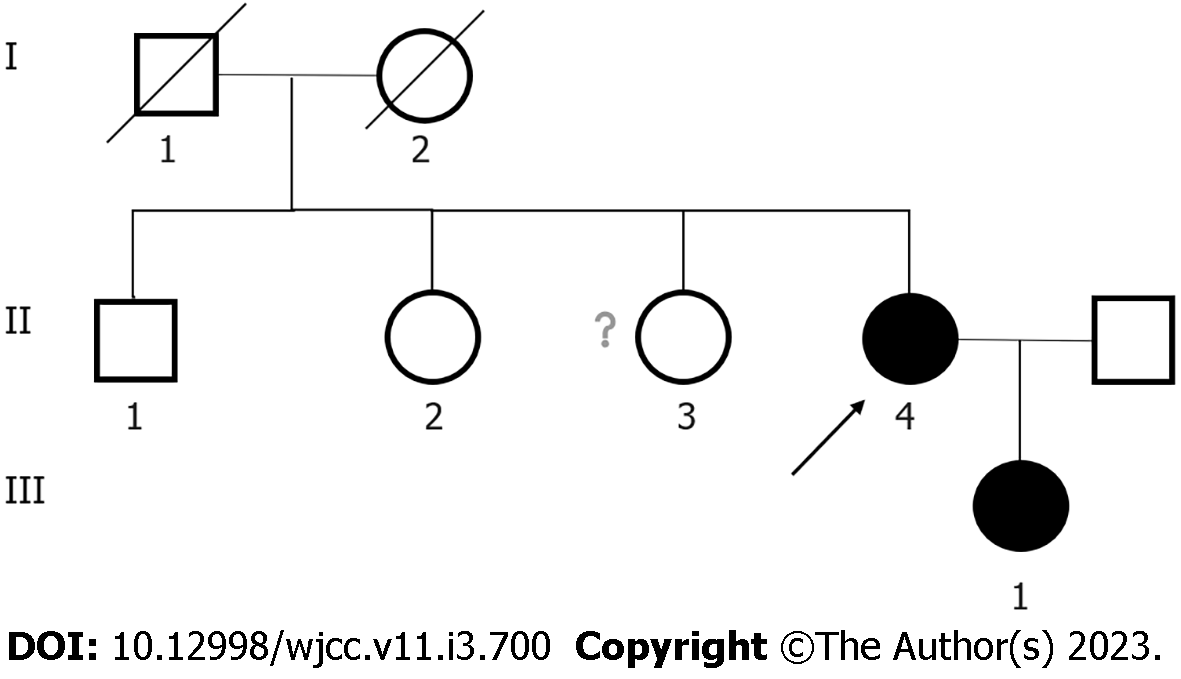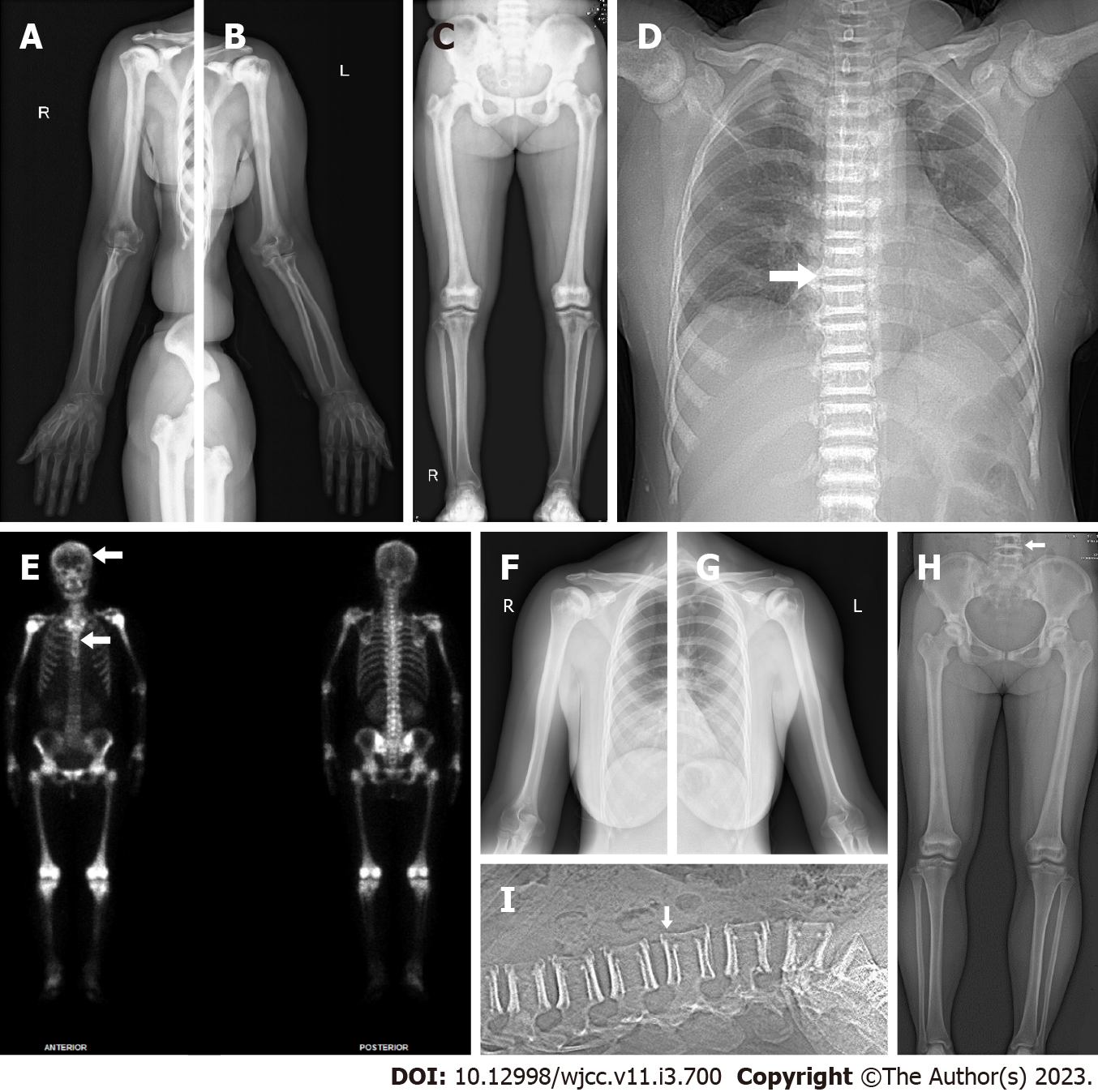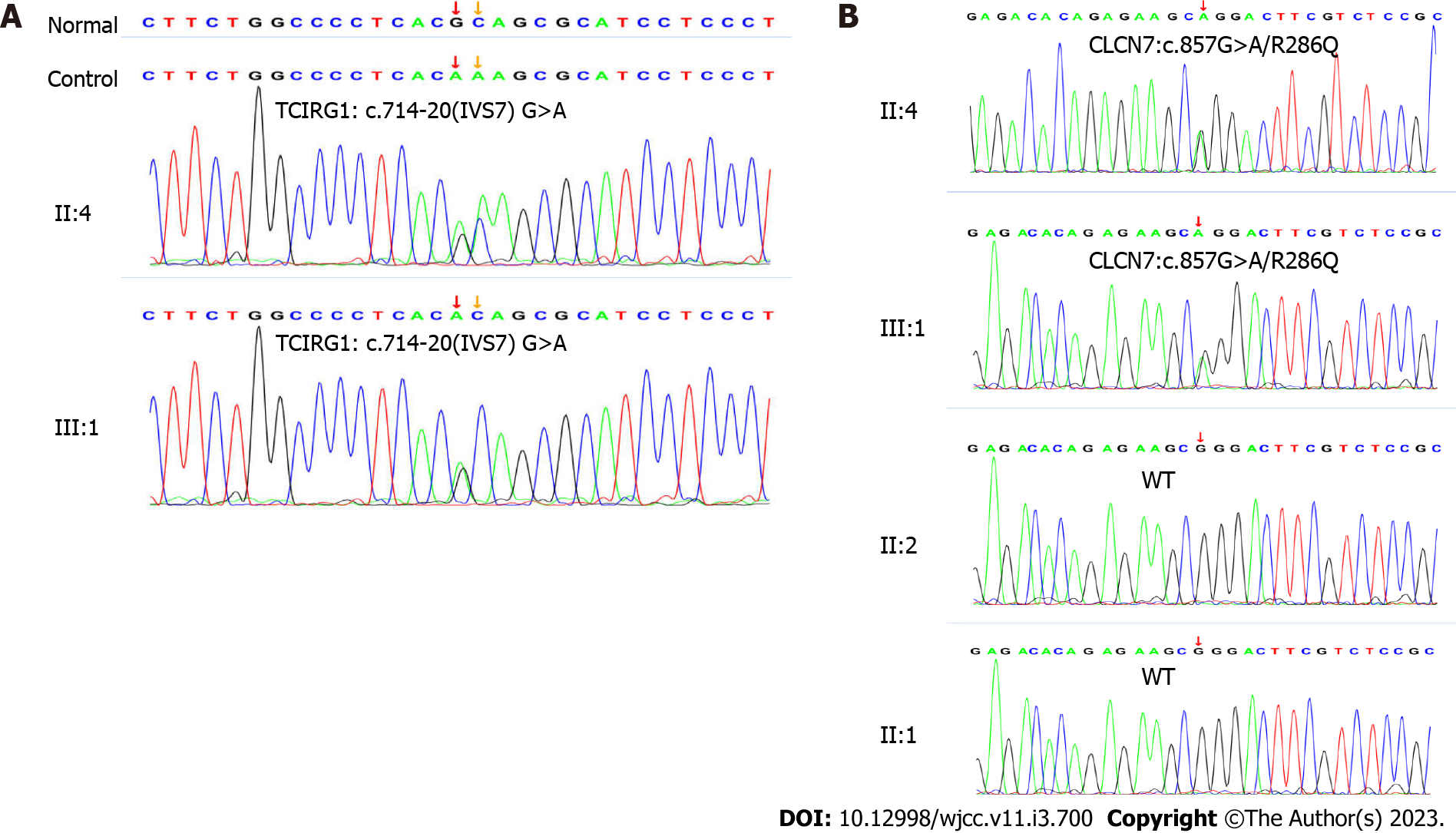Copyright
©The Author(s) 2023.
World J Clin Cases. Jan 26, 2023; 11(3): 700-708
Published online Jan 26, 2023. doi: 10.12998/wjcc.v11.i3.700
Published online Jan 26, 2023. doi: 10.12998/wjcc.v11.i3.700
Figure 1 Pedigree of a family with osteopetrosis.
Circles indicate females, and squares indicate males. The affected individuals are denoted by solid symbols. The arrow indicates the proband (II:4). Diagonal lines represent deceased subjects. The status of II:3 is unknown because this individual did not agree to participate in this study.
Figure 2 The imaging examination of the proband and the proband’s daughter.
A-C: X-ray image of the proband (II:4) demonstrated increased bone density in the right upper extremity (A), the left upper extremity (B) and the lower extremities (C); D: The chest X-ray of the proband (II:4) showed increased bone density of pelvic, with a “bone-within-bone” appearance in lateral of the spine, indicating classic vertebral endplate thickening (white arrow indicates the “sandwich vertebrae” sign); E: Whole-body bone technetium-99m single-photon emission computed tomography scan revealed extremely high bone uptake of long bone, ribs, and spine with absent renal radioactivity visualization (white arrows indicate “helmet” and “tie” sign); F and G: X-ray image of the proband’s daughter (III:1) showed that the bone density of the bone tip, the humerus and the ribs and the medullary cavity became narrow in the right upper extremity (F) and the left upper extremity(G); H and I: X-ray image of the proband’s daughter (III:1) in the lower extremities (H) and the lumbar vertebra (I) indicated classic vertebral endplate thickening (white arrow indicates the “sandwich vertebrae” sign).
Figure 3 Genetic analysis identified mutations in chloride voltage-gated channel 7 and T-cell immune regulator 1 in the osteopetrosis family.
A: The proband (II:4) and her daughter (III:1) carried T-cell immune regulator 1-c.714-20 (IVS7) G>A; B: The proband (II:4) and her daughter (III:1) carried CLCN7-c.857 (exon10) G>A/R286Q mutations. II:1 and II:2 did not carry any of the two mutations. CLCN7: Chloride voltage-gated channel 7; TCIRG1: T-cell immune regulator 1; WT: Wild type.
- Citation: Gong HP, Ren Y, Zha PP, Zhang WY, Zhang J, Zhang ZW, Wang C. Clinical and genetic diagnosis of autosomal dominant osteopetrosis type II in a Chinese family: A case report. World J Clin Cases 2023; 11(3): 700-708
- URL: https://www.wjgnet.com/2307-8960/full/v11/i3/700.htm
- DOI: https://dx.doi.org/10.12998/wjcc.v11.i3.700











